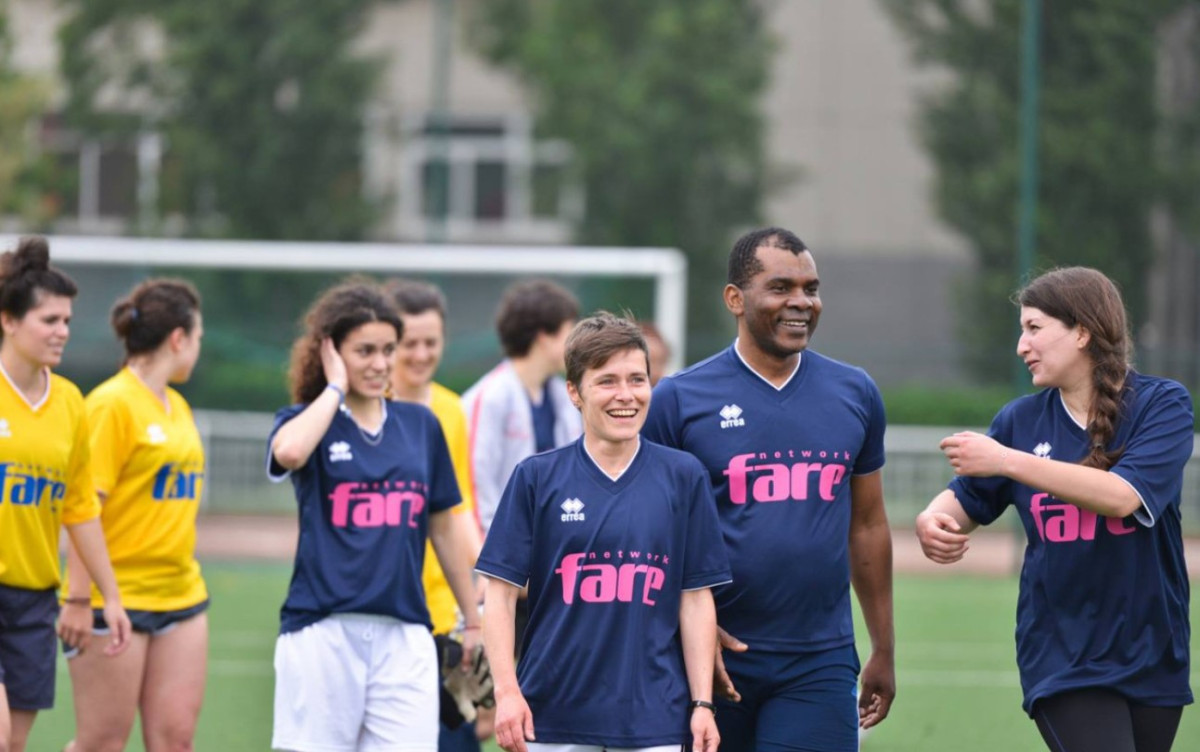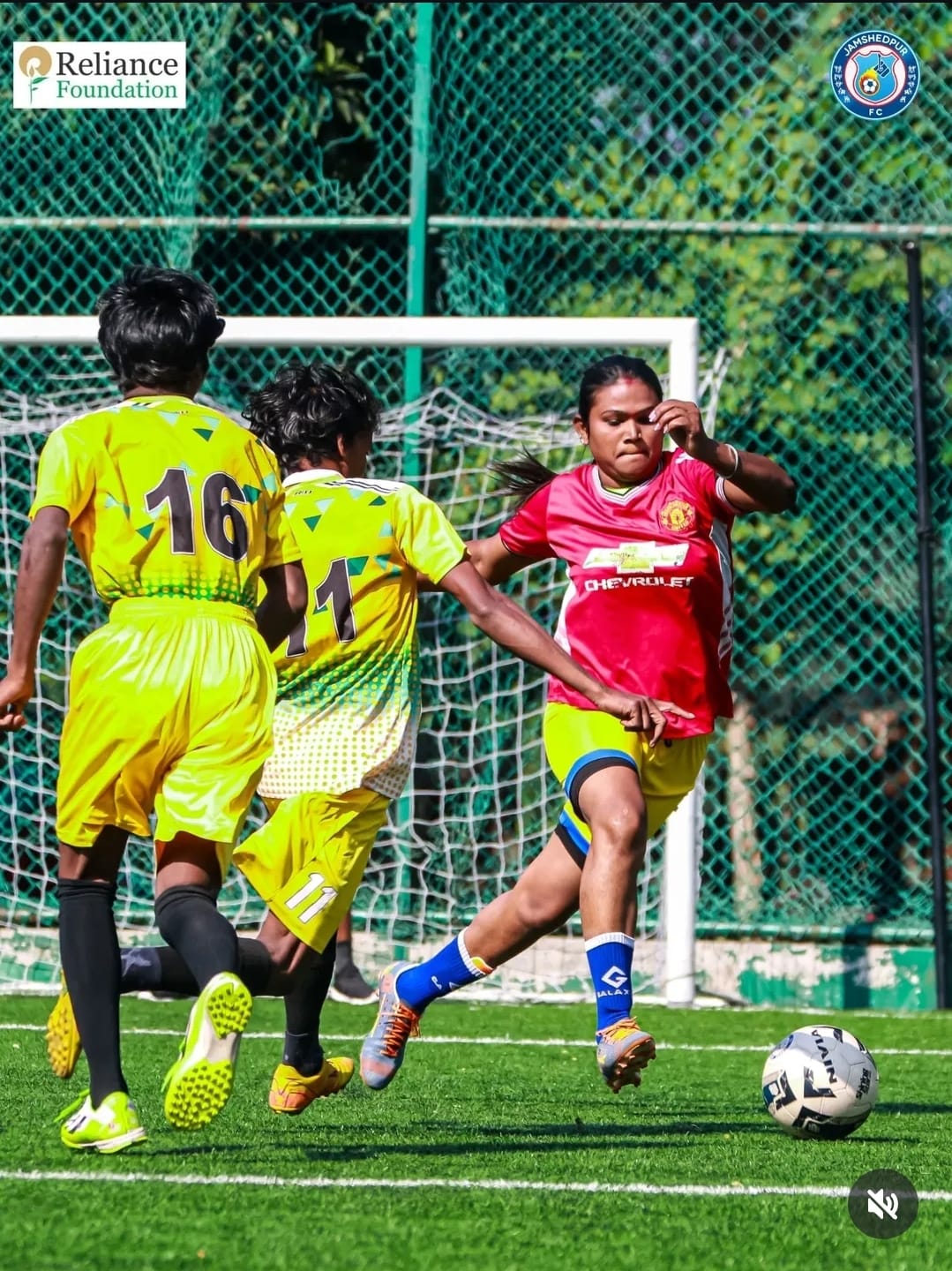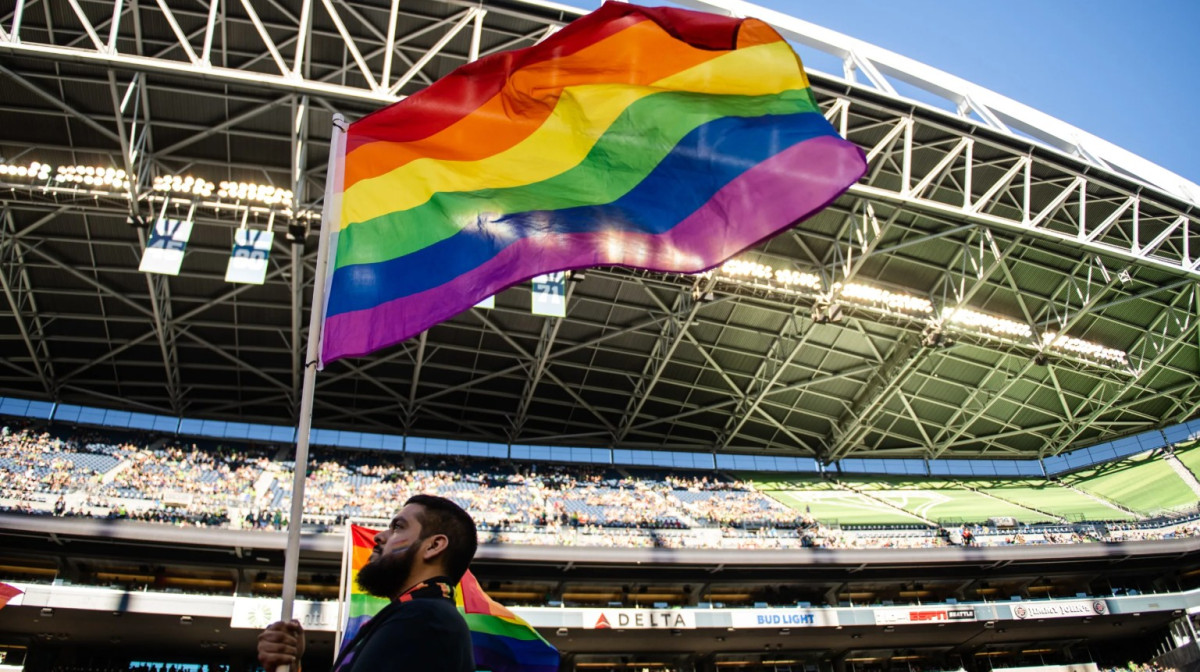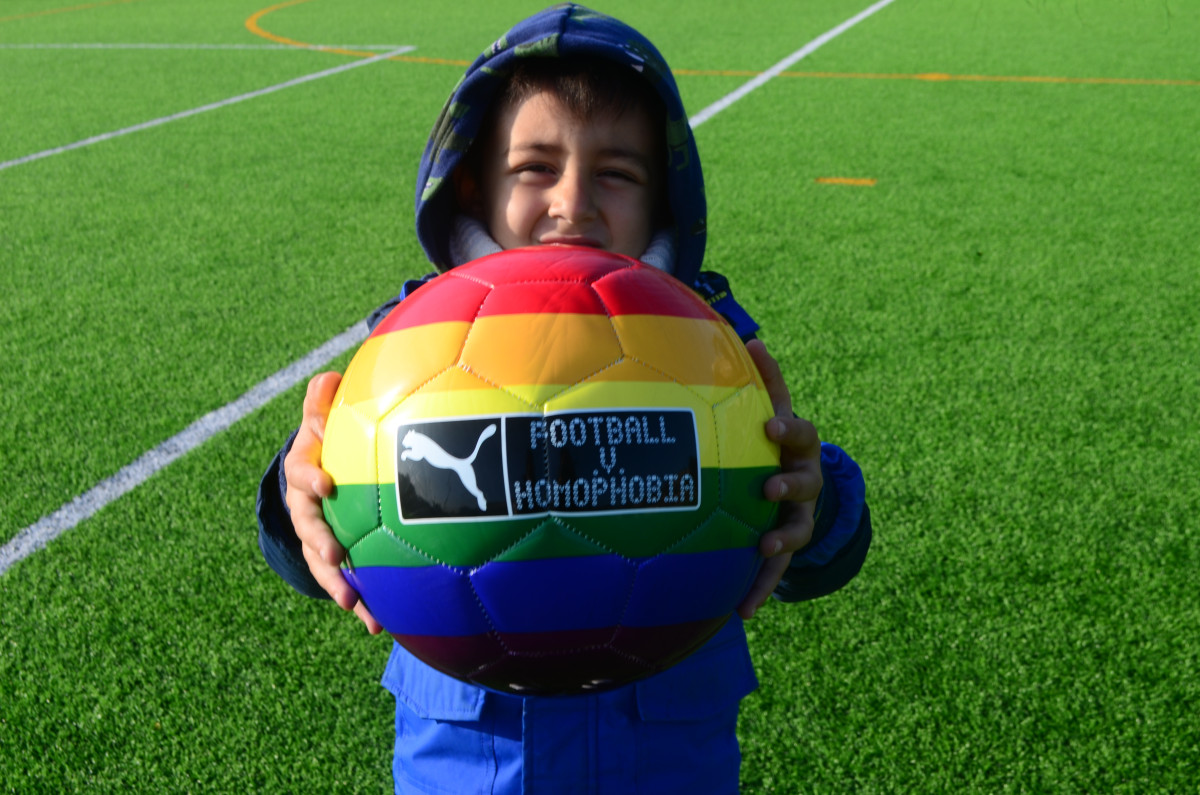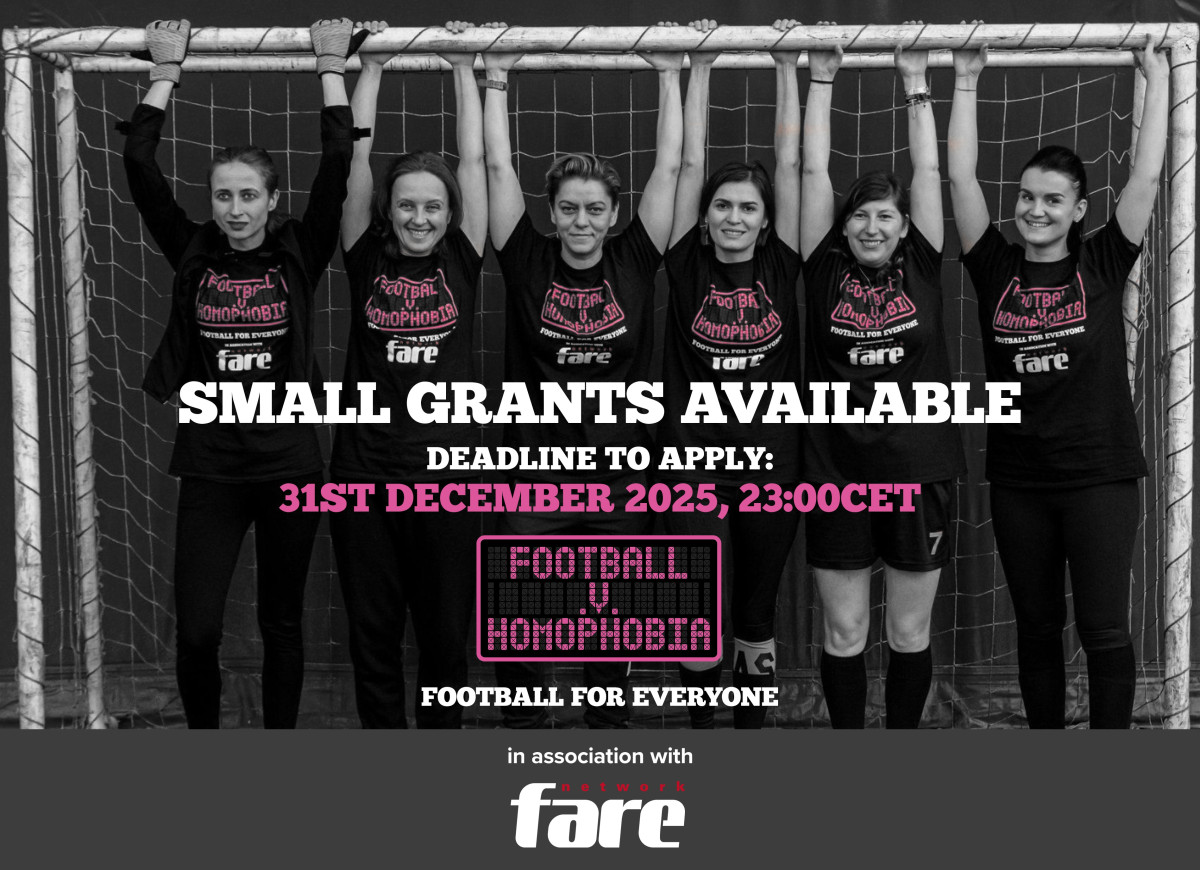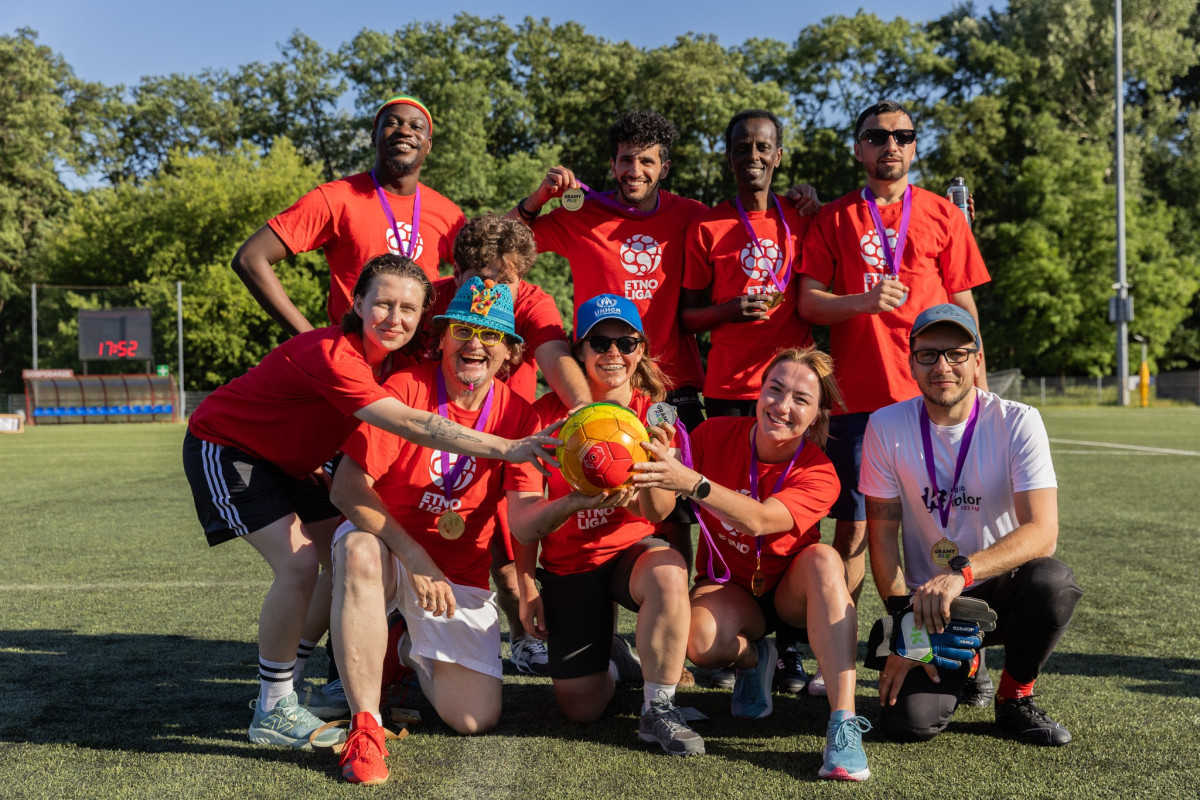Less than a month to the kick-off of the 20th FIFA World Cup, recent incidents in football have put Brazil in the limelight to deliver a tournament free of discrimination. Nevertheless, in the country where 44% of the world’s anti-LGBT violence occurs, homophobia in football is still a taboo.
In April, São Paulo's Court of Sports Justice (TJD) dismissed three complaints that reported homophobic slurs from fans of Corinthians to the city’s self-titled team goalkeeper Rogério Ceni.
According to Mauro Marcelo de Lima e Silva, president of the jurisdictive body, what happened was “a politically incorrect type of joke sparked by the group dynamic of that environment, in which supporters are carried away”.
Days later (06 April), in the Belo Horizonte derby, fans of Atlético-MG subjected the Cruzeiro goalkeeper Fábio Maciel to a similar abuse. No action was taken.
Digital activism of LGBT fan groups
In 2013, to counter homophobic abuse and sexism, a Brazilian sociologist created a LGBT Facebook fan page for supporters of Atlético-MG, named Galo Queer.
The anti-homophobia movement became viral and days after 10 other LGBT Facebook fan pages were created.
The initiatives followed the principles of former LGBT fan groups in the ‘70s but became a type of digital activism that contributed to an increase in the debate around the topic.
“The environment in stadiums is super homophobic. There, you don’t see diversity” explained the journalist and member of the Palmeiras LGBT group Plameiras Livre.
“In 2008, l lived in São Paulo for a few months and had a boyfriend that also supported Palmeiras. We were advised by a friend to never demonstrate that we were a couple inside the stadium for our own sake. You get scared.” he added.
Marco Antônio de Paula Rodrigues, president of the Corinthians fan group Camisa 12, known for carrying out an homophobic demonstration after two of the club’s players celebrated a victory with a kiss, said in a interview:
“We don’t have gays among our group or, at least, any that we know of. If they are there watching the game with us we will respect them, but we are against any anti-homophobia banner and those type of things.
“If after a goal two men kiss among us, that’s bad. The stadium is a temple to us” he added.
According to Gustavo Andrada Bandeira, a lecturer at the Federal University of Rio Grande do Sul, the disapproval of LGBT groups by most fan groups is related to the fact that by carrying out affirmative and inclusive actions, that group will after be labeled as a gay fan group.
“One of the things that reinforces masculinity in our society is homophobia.” he explained.
312 homophobic related deaths in 2013
Brazil’s football refuse to acknowledge and combat homophobic abuse is compliant with the country’s legislative system.
Last December, Brazilian lawmakers refused a draft bill that would have prohibited discrimination or inciting violence on the basis of sexual orientation and gender identity.
“Brazil is in violation of international resolutions and statements where it signed a commitment to protect LGBT citizens, both at the level of the United Nations and Organisation of American States” said Paulo Roberto, a lawyer and member of Group of Lawyers for Sexual Diversity (GADvS) in an interview.
According to the anti-homophobia campaigners Grupo Gay da Bahia, 312 LGBT Brazilians have been murdered in 2013, only two outside the country.
In average, every 28 hours a Brazilian LGBT life is taken away.
“If this country is not safe for our own people considering anti-gay violence, how can it be safe for people coming for the World Cup and the Olympics?” added the lawyer.
Homophobia in Mexican football
Similarly to the incidents in Brazil, a Mexican media report from March 2014, mentions an increase of homophobic abuse in the country’s stadiums.
“In our understanding, as there are racist remarks that can’t be accepted because of its discriminatory nature, homophobic chants that look to intimidate and abuse the opposing team’s goalkeeper, can’t also be accepted.” said Ricardo Bucio Mújica, president of the Mexican National Council Against Discrimination (Conapred).
To help tackle the abuse, the campaigner called for preventive and repressive campaigns to be carried out by Mexico’s football governing bodies.
US, a global example
In 2013, the American fan group of Portland Timbers, Timbers Army, were news after mobilising 5,000 supporters to create the largest anti-homophobia rainbow tifo in the history of Major League Soccer (MLS).
Staged on the lead up to the International Day Against Homophobia (17 May), the 4,500 coloured flags tifo was used to show support for the LGBT community and raise awareness on homophobic abuse.
“We see this football club as an extension of the community. Within the stadium - we strive to create an atmosphere that is reflective of the city in which we live. We want people to feel welcome in our supporters section regardless of sex, race, or sexual orientation,” said a representative of the group.
The initiative was highly praised, but the group recognised that the acceptance of the campaign was related to a stigma in US football that perceives it as a less masculine sport as for instance American football.
“The football community is much less testosterone driven than many other sports in the US, which may lead to more understanding. Since the football community is already so tight knit here in the United States, it makes coming together on these issues a bit easier.”
Since then, the country has set a global example in fighting homophobia after welcoming the first gay professional basketball, football and American football players in the US major leagues.
IDAHOT 2014
On the International Day against Homophobia and Transphobia (IDAHOT), Fare stresses the role of football in celebrating diversity and bringing people together, empowering the LGBT community and raising awareness on human rights.
